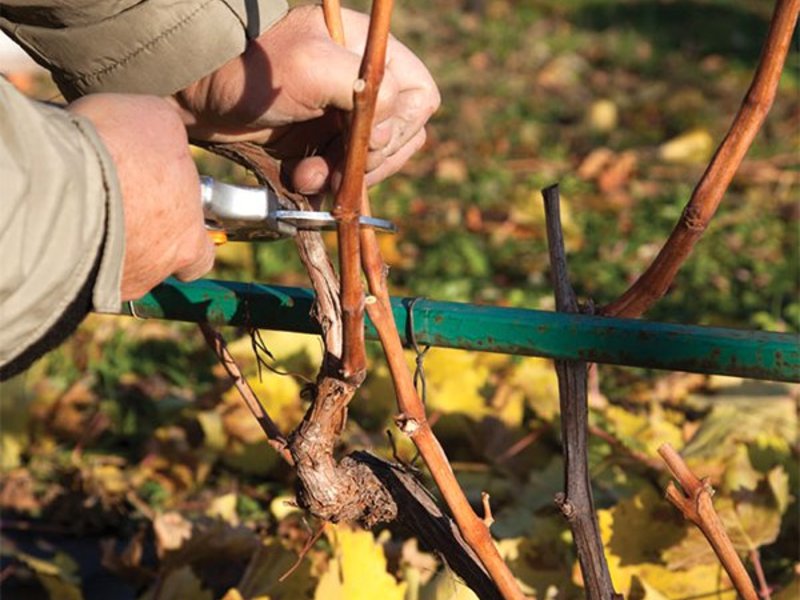
Proper care of grapes in the fall not only increases the resistance of the vines to frost, but also is the key to intensive development and plant health in the spring, which affects the size and quality of berries next year.
Most of the work falls on October, but to begin preparing grapes for winter in the middle lane should already be in the first half of September.
Content
Grape Care in September and October
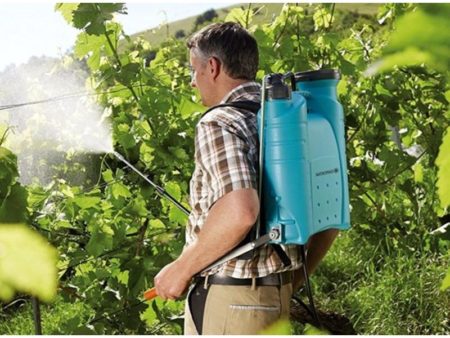
Autumn grape care has two goals: to lay the foundation for high-quality fruiting in the next season and to prepare the plant for the winter period. The bush is considered fully prepared for winter if it is healthy, not affected by pests or diseases, has well-ripened wood, regained the strength spent on fruiting, and in time went into a sleeping state.
These tasks and growing conditions determine how to care for grapes in autumn. The list of main works:
- the last top dressing of the season;
- pruning grapes;
- root catarrh;
- protection against fungi and insects;
- pre-winter watering;
- shelter for the winter.
The quality of autumn care is especially important for late grape varieties, limited in time for ripening wood and slowing down vital processes. When grown in a temperate climate, even medium-ripening varieties may not have time to prepare for winter. In view of this, it is recommended to observe two rules:
- It is necessary to start autumn work as early as possible - as soon as the harvest is removed from the vines. The preparation of early grapes must begin, without waiting for the end of fruiting of the entire plantation.
- Care should be taken in advance to ensure that the vines are not overloaded. If the plant uses up too much energy to ripen the crop, it will be difficult to restore it in a short time. It is worth sacrificing the volume of the crop in favor of the bush and perform normalization by thinning the bunches.
Topping grapes in autumn
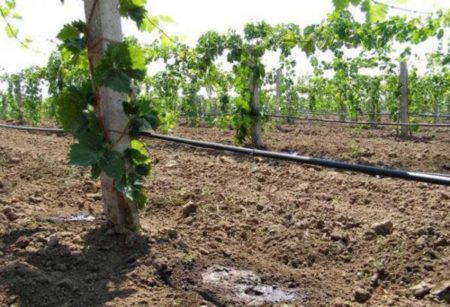
The bush of grapes depleted by fruiting does not possess sufficient resistance to cold and can freeze during the winter. Under the shelter, conditions favorable for the development of fungi can form (for example, due to thaws), and in this case the plant health in the spring will depend on their immunity, therefore it is dangerous to send weakened grapes to the shelter.
In order to avoid negative consequences, in September grapes should be fed. It is necessary to replenish the supply of nutrients, primarily potassium and phosphorus, as well as calcium, magnesium, copper, iron, manganese, zinc and boron. During this period, it is not recommended to give nitrogen, since the substance provokes the growth of green mass, while grapes should go into a sleeping phase. Only young plants do not need to be fed, since the fertilizers laid when planting in the hole should be enough for 3-4 years.
Fertilizer can be applied in liquid form, by dry method or by spraying. For watering, it is necessary to dig a groove 10 cm deep around the bush at a distance of 40 cm so that the fertilizing does not spread, wetting the surface layer of the soil, but arrives at the roots.As a liquid fertilizer in the fall, you should choose one of the options:
- 30-40 g of superphosphate and 20-30 g of potassium sulfate per 10 liters of water;
- 20-40 g of potassium monophosphate in the same volume;
- extract from 200-300 g of wood ash per 1 liter.
Trace elements can be added to the nutrient solution or introduced by the foliar method. Spraying should be carried out in the evening: at this time, the absorbent capacity of the leaves is higher than during the day, and there is no bright sun that can burn wet greenery. For foliar top dressing, the concentration of the substance must be reduced by 3 times compared with the volume calculated for irrigation:
- magnesium sulfate - 1 g per 10 liters;
- manganese sulfate - 2 g;
- boric acid - 1-2 g;
- zinc sulfate - 2 g.
The bush and copper will receive a sufficient amount if treatment with copper or iron sulfate is used as a prophylaxis of fungal diseases. Additional spraying should not be done to avoid poisoning the plants.
If the foliar method is used for micronutrients, phosphorus-potassium top dressing can be given in dry form. To do this, it is enough to plant 300 g of ash in the soil when digging or to put 10-15 kg of rotted manure or compost into a furrow 20-25 cm deep dug around the bush, after which it should be abundantly watered. The ditch for fertilizer needs to be done at a distance of at least 40-50 cm from the point of growth. You can also make manure mixed with wood ash in the form of mulch. For autumn top dressing, only well-rotted organics are suitable, otherwise the grapes will receive an excess of nitrogen.
Winter pruning of grapes
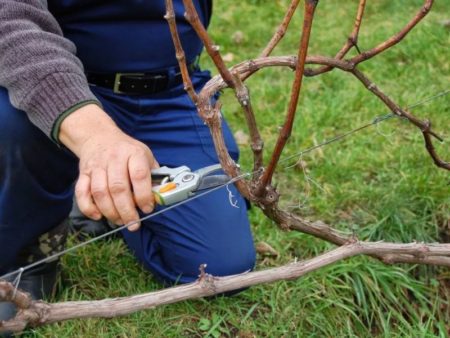
The key point in grape care in the fall is pruning for the winter, its task is to rejuvenate the bush to maintain high yields, clean from damaged areas and thin out shoots, reducing the risk of disease. It is optimal to carry out the procedure in two steps.
Pre-cropping
It is held in September, when the deciduous cover is still on the bushes. The instructions for the first fall pruning look like this:
- Damaged and dry vines should be removed.
- Cut growth from the main trunks, reaching 60 cm in height.
- Shoots growing above 30 cm from the ground, shorten by 15% of the length.
- Make trimming stepchildren to 2 leaves.
Slices should be treated with 3% hydrogen peroxide or a strong solution of potassium permanganate (concentration of about 50 g per 1 liter of water). After the slices have dried, cover them with garden varieties.
Main cropping
The procedure must be performed 2-3 weeks after the leaves fall, when the movement of juices in the vines has already stopped, but before severe frosts.
Trimming Procedure:
- On last year’s replacement knot, you need to remove the vine that has bred in the current season, pruning it as low as possible.
- The shoot from the outside (lower) of the fruit link should be shortened to level 3 of the kidneys - a new replacement knot will form from it.
- Of the shoots on the inside, 1-2 should be left on the fruit arrow, cutting to about 6-10 buds. The exact number of eyes that you want to leave can be determined by the diameter of the shoot, adding to its value 1 or 2, and for varieties with small clusters (less than 0.5 kg) - 3-5. The resulting number will be the "number" of the eye on the fruit arrow, above which should be cut.
- All hemp should be processed according to the standard scheme: first with potassium permanganate or peroxide, and then with garden var.
The principle of this pruning is the constant updating of shoots on the bush, in which there are no branches older than 4 years. This allows three-year-old vines at the peak of fertility to receive maximum nutrition.
Katarovka roots
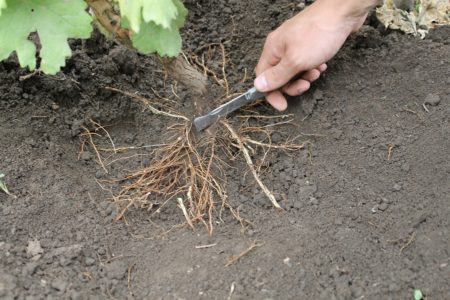
Simultaneously with the preliminary pruning of the bush (in September), it is possible to carry out pruning of the roots, called katarovka. Small (dew) roots located in the upper layers of the soil are subject to removal. It is this part of the root system that primarily suffers from freezing in winter or drying out in dry summers and is less resistant to damage to grape soil aphids. Rotting of small roots can spread to the main root.
Katarovka is obligatory if there is no opportunity to look after grapes regularly. If the bush is provided with constant supervision, removal of the roots can be carried out as desired as a safety net.
Catharization Procedure:
- Loosen and remove from the near-stem circle a 20 cm thick layer of soil.
- Cut dewy roots near the trunk without leaving stumps.
- If the plant is an adult, thickened roots may also be located in this layer. Their pruning should be carried out gradually over a period of 2–3 years, that is, 30–40% of shoots need to be removed at a time.
- Sanitize the section with a solution of copper sulfate (3%) or boric acid (1%).
- Allow to dry.
- If desired, you can wrap the root with a film, but do not tighten it tightly. Admission will delay the next cathing procedure for 2-3 years.
- Return the soil to the trunk circle.
Pest and Disease Control
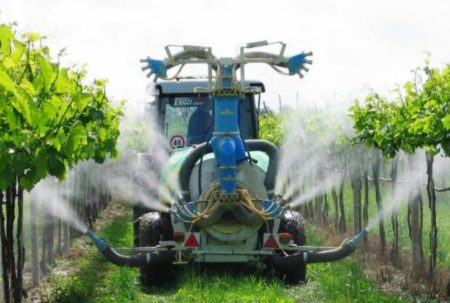
The treatment of the bush against pests and diseases should be carried out immediately after harvesting. It is necessary to stop the spread of insects or fungi on the vine as soon as possible - this will increase the chances that damaged plants will have time to recover before winter. In addition, many pests turn into larvae by winter, becoming invulnerable to some preparations.
In the case of autumn processing, the use of “chemistry” is justified, which is safe for next year's crop, but more effective than biological and folk remedies.
- Depending on the type of pests, insecticides and acaricides should be used - Actellik, Oksikhom, Dimetoat and others.
- Against the fungus, it is necessary to treat with 5% iron sulfate, and in October, after falling leaves and pruning, make spraying with a 3% solution of copper sulfate.
- In addition to these measures, you can use biological products (Fitosporin, Gliokladin, Gamair, Trichodermin), but you should pay attention to the air temperature necessary to maintain the working properties of the product.
If the treatment is preventive in nature, the following scheme is recommended:
- After harvesting, carry out treatment from pests with a lime solution. To do this, 1 kg of quicklime must be poured with 3 liters of water and, waiting for the reaction to end, pour 7 liters of water into the solution.
- After falling leaves, perform a deep digging of the soil to destroy the mycelium and destroy the larvae wintering in the soil.
- In the first half of October, spray with a solution of 10 tablespoons of salt and 5 tablespoons of soda in a bucket of water.
- After pruning, bend the vines to the ground, preparing for shelter.
- Shortly before warming the bush for the winter, spray 3% with iron sulfate.
In this case, in the spring after cleaning the shelter, it is necessary to treat the bushes with a 1% solution of copper sulfate. We should not forget that you need to spray not only the vine, but also the soil in the near-stem circle.
Winter watering
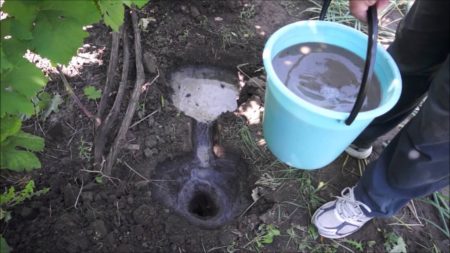
Autumn grape care in September in the middle lane implies continued irrigation as usual, except during periods of rainy weather. Moisture deficiency prevents the preparation of wood for the winter season.
It is especially important to maintain moisture if the grapes grow on sandy or sandy loamy soil.In this case, you need to water the vineyard often, in small portions, but plants on clay soil or chernozem need more rare, but plentiful irrigation.
After shedding leaves and carrying out the main pruning, but before the soil has time to freeze, it is necessary to do water-charging irrigation. Water should be poured into trenches 10 cm deep around the bush. On average, for each plant you need to give 5 full buckets of water. Old and tall vines will need up to 10 buckets, 10-30 liters will be enough for young plants. Sandy soil requires an increase in the dose of watering to 6 buckets (relative to the average figure), and clay soil - reduces it to 2.5-3 buckets.
Shelter of the vine for the winter
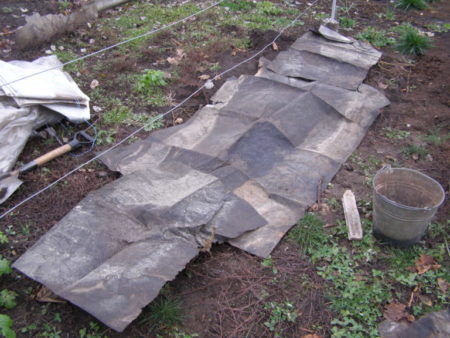
You need to cover the grapes until the temperature reaches -5 ° C. Bend the vine to the ground should be even earlier, to catch up to the first frost. Frozen wood loses its flexibility, so when laying the vine can crack.
In case of overheating, the root system of the bushes may vypitat. It is advisable to first make a light shelter, and later strengthen it, another option is to remove the cover during periods of autumn warming. In regions with snowless winters, a denser shelter is required, but the material must be breathable - the lack of ventilation will cause condensation, which is fraught with the appearance of fungi and mold.
Shelter of an adult bush
The vines must be untied from the supports and bent to the ground, preferably secured with hooks. From above they should be covered with spruce or pine branches. Lapnik is considered the best cover for grapes, because it delays the layer of snow and does not interfere with air access to the vine.
Shelter of seedlings and plants of the first year
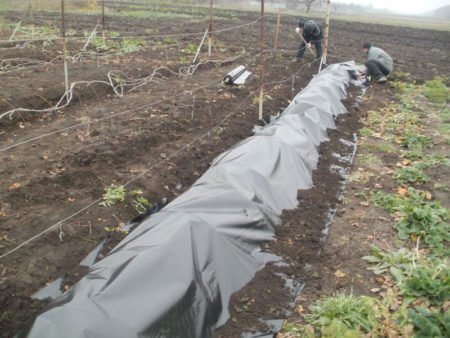
Warming the bushes planted last spring or on the eve of winter, you need to be more careful - it is recommended to shoot the shoots. For this purpose, furrows should be dug around the bush about 30 cm deep. The shoots that are previously connected must be carefully, trying not to damage, placed in a trench, and covered with three layers on top (about 10 cm each): soil, humus and another layer of soil.
Autumn Care Issues
The main nuisance with grapes during the autumn preparation, which can happen even if all points of care are followed, is a slowdown in the aging process of the wood. Gardeners find a problem, usually in October, when it is time to cut the plant and the bush is still green. In this case, you can help the cause by accelerating the maturation artificially. It is necessary to lay the vine on the ground and cover it with a material with good thermal insulation qualities. After the ripening of the wood, the bush should be freed from the shelter, carry out the necessary manipulations (pruning, preventive treatment, pre-winter watering) and cover already planned for the winter.
It is advisable to take care of stimulating the maturation of wood in advance. In addition to shelter in October, two techniques will help:
- In late August and early September, you should stop watering the grapes. If the weather is hot enough so that the plant can suffer without irrigation, you can give moisture along with root dressing with potassium and phosphorus.
- In September, an unscheduled spraying should be carried out with a fertilizer containing potassium and phosphorus (20-30 g of each substance per 10 liters).
Winter preparations for winter, no less than spring work and care during the season, determine the future volume and quality of the grape harvest. Plants that successfully survived the winter quickly grow, suffer less from illnesses and have a sufficient supply of strength for growing fruits.

 Non-covering winter-hardy grape varieties for Moscow region
Non-covering winter-hardy grape varieties for Moscow region How to keep the vine in winter
How to keep the vine in winter When can I transfer grapes to another place in the fall
When can I transfer grapes to another place in the fall How to cover and prepare grapes for the winter in the suburbs
How to cover and prepare grapes for the winter in the suburbs